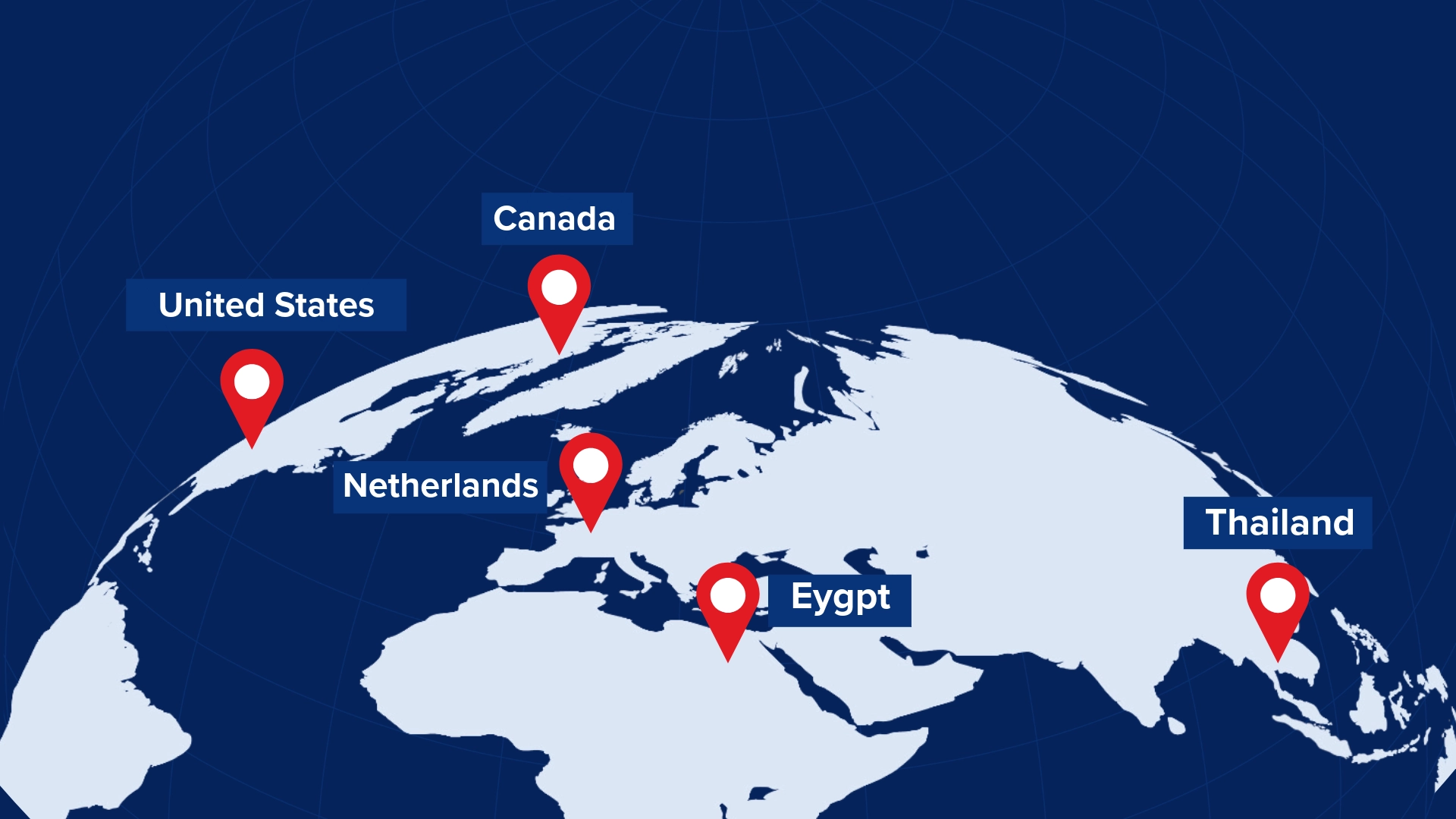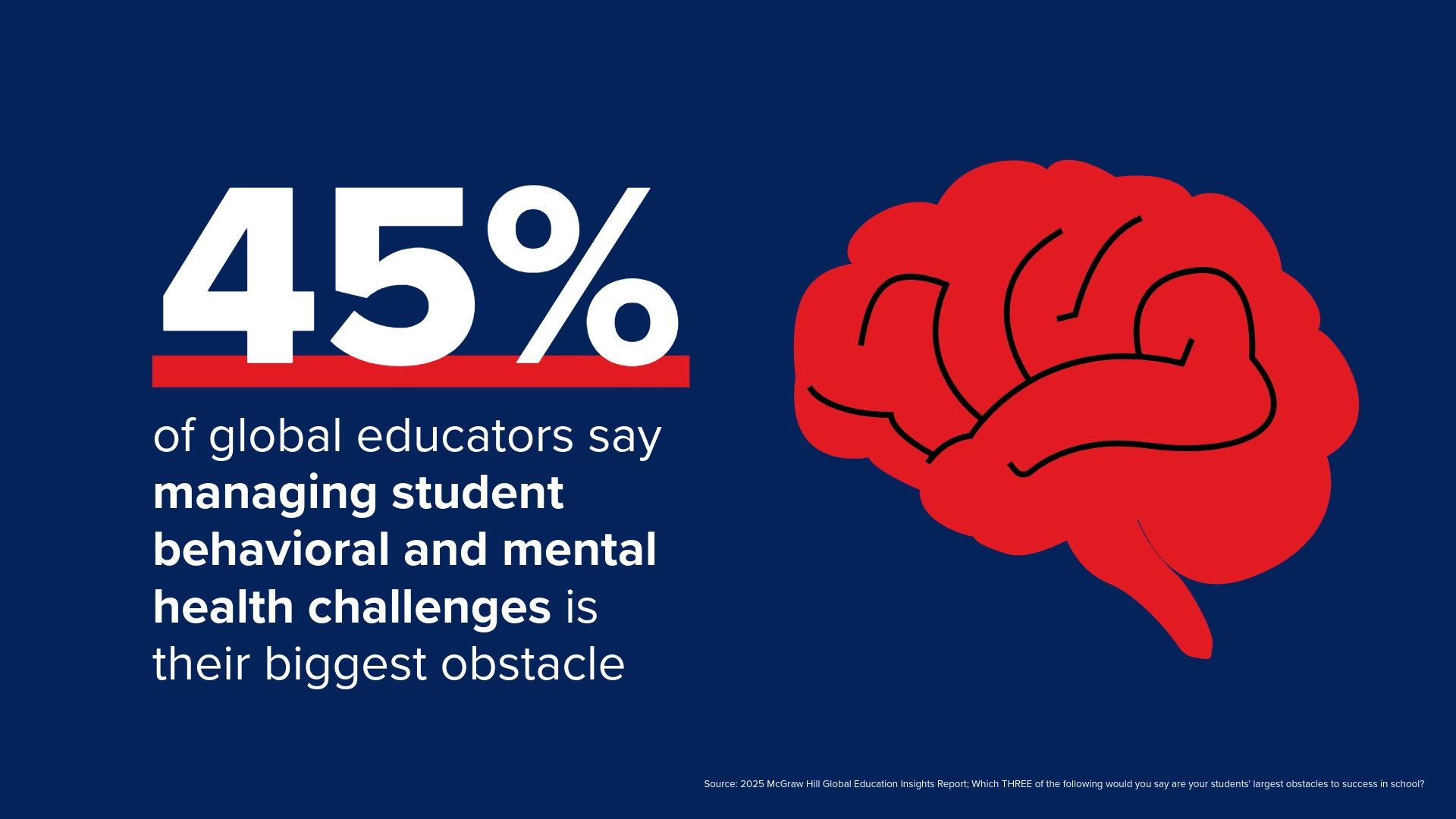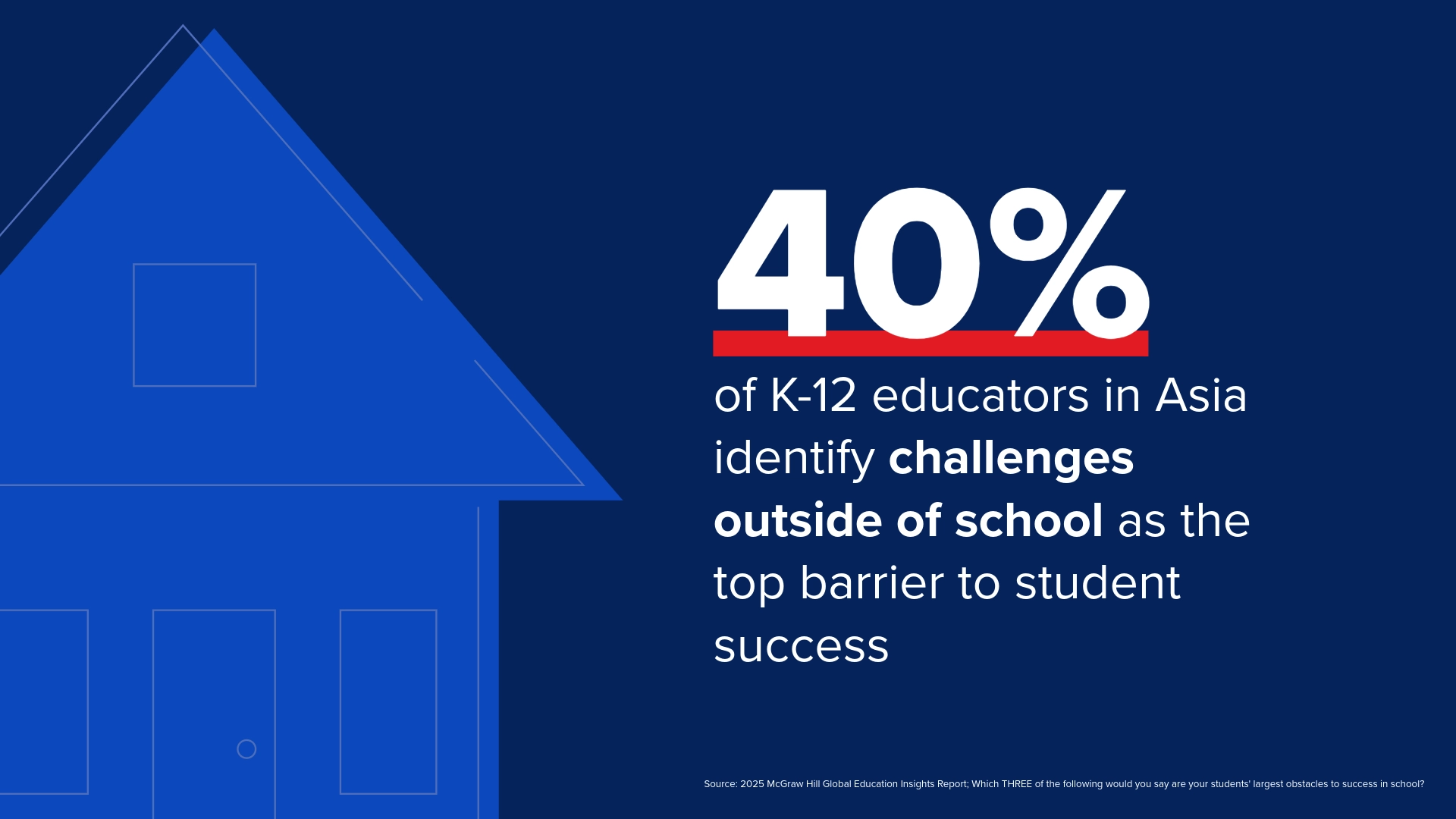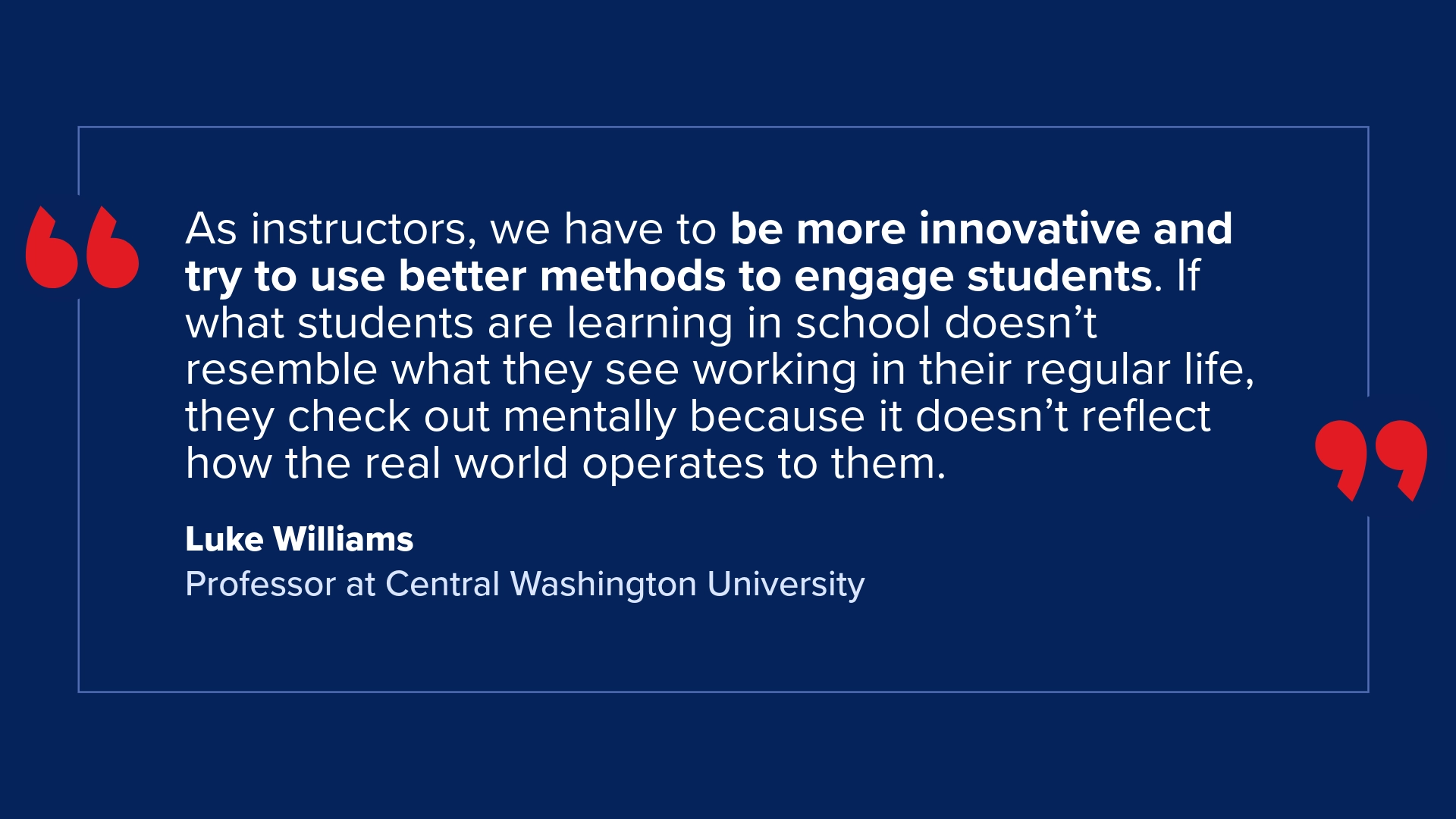My Account Details
5 educators, 5 countries, 5 unique perspectives on the challenges of teaching and learning
We spoke with educators from across the globe about the challenges they face in the classroom, how they’re supporting their students, and the changes they hope to see in the future.

Education is anything but one-size-fits-all. Learning varies widely from classroom to classroom, shaped by everything from teaching styles and student needs to available resources and local culture. But as the 2025 McGraw Hill Global Education Insights Report shows, there are certain things that transcend borders.
Our data revealed that keeping students engaged was a shared concern among educators around the world. But so were broader societal issues, like mental health struggles or lack of family support, that can make it harder for students to succeed academically.
To better understand how these obstacles play out in the classroom, we spoke with five educators from five different countries. They shared the challenges they’re experiencing, the different ways they’re supporting their students and the changes they hope to see in the future.
Egypt
A safe space in a changing world
Inside her 11th and 12th grade social studies classroom at the Egyptian American International School in Cairo, Sarah Elkholy brings historical moments to life. Outside of class, she takes just as much pride in her role as the school’s unofficial den mother — doling out snacks, offering advice and encouragement, and always making time for students who need her.
“My students and I can talk about anything, whether it’s problems at home or school or something they’re struggling with,” she says. “I give them focus and attention. I’m all in. I’ll never sit with a student and look at my watch or my phone or grade a paper. Their one-on-one time with me is just that: one-on-one.”
Ranging in age from 16 to 18, her students are figuring out how to balance going to college and finding their own feet, while staying connected to their family and cultural norms. That can be difficult, Elkholy says, which is why having an open dialogue is so important.
While Elkholy provides students with a safe place to decompress, she’s not a trained professional. As she sees it, “The biggest problem we have here with mental health is that some parents don’t want to face it.” According to the 2025 Global Education Insights Report, educators identified managing students' behavioral and mental health challenges as their top obstacle. Unfortunately, talking about mental health can be difficult for some families. And while Elkholy doesn’t hesitate to bring parents and support staff into the conversation when needed, professional mental health resources aren’t always easy to access.
“As an educator, there’s a very definite boundary where your role ends,” she says.

Thailand
Support systems that stick
The students at Berkeley International School in Bangkok, Thailand, are in many ways a reflection of the city itself, says Shobhit Pathak, who teaches AP Science and Math to students in grades 9-12. About 40% are local, while the remaining 60% come from all over the world.
Many are expats or the children of professionals temporarily based in Bangkok for work, a reality that often leads to high turnover within the student body. “There are kids who have spent two years in each school, so they’re coming to me in grade 11 and this is their sixth or seventh school,” Pathak says. “That’s not an anomaly for me.”
Also not unusual: sleep-deprived learners. Some students live by themselves in apartments near school during the week to avoid Bangkok’s bumper-to-bumper traffic; others spend evenings home alone while both parents work. Occasionally, to keep students engaged, Pathak invites students to take a quick power nap at the start of morning class. “At least with a nap, I can salvage the last 30 minutes of class,” he says. These scenarios reflect a broader regional trend. According to findings from PreK-12 educators from our Asia report, 40% of teachers cite challenges outside of school, such as home life, as the biggest barriers to student success.
Though Pathak describes the student body as warm and welcoming, he estimates that 25% of learners there are navigating a mental health issue. Fortunately, the school is prepared. A dedicated nursing department, learning support and counselors provides both physical and mental health support. And, crucially, teachers maintain an open-door policy, so students can drop in for one-on-one conversations during snack breaks or lunch.

The informal check-ins can make a real difference. He remembers one student who seemed visibly upset in class. During a break, the student confided that he felt overshadowed by a high-achieving older sibling. Pathak encouraged him to explore new interests and challenged him to try three different activities that year. Eventually, the student found his place in Model UN. “I think it was a good, rewarding story in the end,” he says.
Canada
Chemistry, with a side of care
It’s been five years since the pandemic, but Dr. Valerie Reeves is still seeing its ripple effect — and it has her concerned. A professor of chemistry at the University of New Brunswick in New Brunswick, Canada, Dr. Reeves teaches first-year students, most of whom attended local high schools. “They’re still doing great in my class, but I don’t feel I reach them as well as I could,” she says. “Many have lost the ability to retain information.”
Why? For starters, area high schools pared down their curriculum and the number of tests given during the pandemic. Consequently, many learners now lack the study skills and experience needed for high-stakes assessments. What’s more, she says, students often skip class, believing they can catch up by watching YouTube videos or Googling the material instead.
As an academic advisor and self-described “mama bear” for first-year students, Dr. Reeves routinely meets with students who are juggling multiple part-time jobs to pay down debt — often at the expense of their learning and well-being. When extra support is needed, she connects students to on-campus resources.
It’s not exactly what she imagined when she started teaching in 2003. Now, as she approaches 50, she finds herself digging deep for the energy her students need to stay engaged. The demands can be relentless, and she’s not alone in feeling the strain. In fact, the findings from Canadian Higher Ed instructors from our report found that preventing educator burnout is seen as the most positive impact of AI—an increasingly relevant insight as teachers like her look for sustainable ways to keep showing up for their students.
“I’m just trying to get them excited — storytelling, jokes, anything related to chemistry. I’ve often had students say, ‘I tried harder in your class because I didn’t want to disappoint you. You always seem to like chemistry so much.’ To me that’s the biggest compliment. If that’s what it takes to motivate, I’ll use it.”
United States
When life is the biggest obstacle
Luke Williams’ classes aren’t big — usually 25 people or so — but chances are they’re diverse. It’s not uncommon for a fresh-out-of-high-school student to sit alongside a mid-career professional or even a captain of industry in one of Williams’ IT management courses at Central Washington University (CWU).
No matter who’s enrolled, he offers the same advice: You may struggle with some of the material in this course, but the biggest barrier keeping you from succeeding will be life itself. Over his 11-year teaching career, Williams has seen it play out repeatedly, particularly during the pandemic. Although CWU was already offering online classes long before lockdown, the other pressures students faced during that time — health concerns, financial instability, childcare and work stress, to name a few — became much more evident. “When you think about learners, you carry all of those things with you into the classroom as well, right? And sometimes that’s good because those unique experiences that you bring to the table are helpful,” he says. “But the other side of that is, the challenges can prevent people from showing up or doing the work.”
Like many other schools, CWU has mechanisms in place for what the school calls “behaviors of concern.” If a student misses a string of classes, for instance, or seems to be struggling, the Student Affairs Office can step in with support and resources.
But Williams also believes that moving toward a student-centric classroom can help. “As instructors, we have to be more innovative and try to use better methods to engage students. If what students are learning in school doesn’t resemble what they see working in their regular life, they check out mentally because it doesn’t reflect how the real world operates to them.”

Netherlands
A buffer with benefits
On the campus of Nyenrode Business University in Breukelen, Netherlands, sits a 13th-century castle surrounded by a moat. In many ways, it’s a fitting metaphor for a system that serves the school’s students and faculty.
Here, program management teams and exam committees serve as buffers between students and instructors. They handle questions, concerns and complications from learners so the faculty can concentrate on teaching. Program management teams offer support for students going through personal issues, while exam committees consider things like deadline extension requests, exam redos, and suspected incidents of cheating. Sometimes, the two collaborate on a student’s case.
During his 18-year career, Prof. Dr. Bo van der Rhee, a professor of operations management at Nyenrode, has taught thousands of students worldwide, in person and online. He’s also spent four years as chair of an exam committee that reviewed about 450 student cases a year. So he understands the value of the buffer.
This was particularly true after he read our report and many of the issues his peers around the world face. As an instructor, “I don’t experience that so much at Nyenrode,” he says.
Still, that’s not to say there aren’t students with issues. Recently, Dr. van der Rhee learned that one of his executive education participants was given an extension on an assignment so they could tend to a family emergency. “But,” he adds, “I hardly deal with these situations myself.”
Observations on GenAI
The challenges educators face are significant, but they also present opportunities for innovation. Many instructors we spoke with shared how these hurdles inspire creative ideas, particularly around leveraging technology like AI to better support students. They see potential for AI to reduce administrative burdens and foster collaborative learning environments, provided proper training and support are in place. “I hope to see us get to a point where we’re working together side by side to solve some of the most difficult challenges in society,” says Luke Williams.
Related: How to ensure AI will be a net positive for the educator profession
Related: Three ways AI helps students learn more effectively today